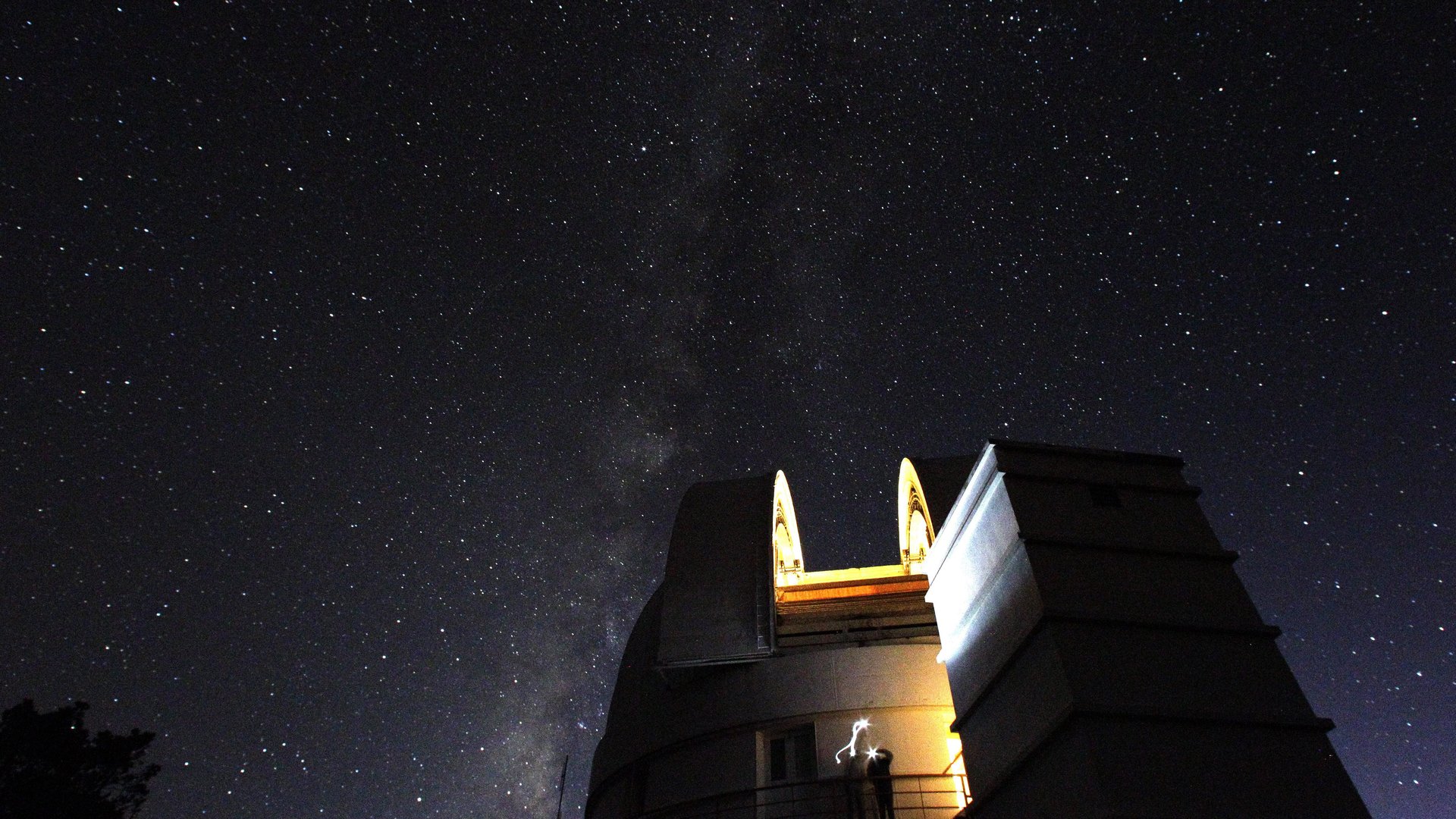Fracking is ruining one of the last truly dark places in the US, and astronomers are on edge
On a near-cloudless night in mid-March, atop a mountain in the Davis range of the Chihuahuan desert in West Texas, hundreds of families sat on blankets in the pitch-dark, looking up at the starry sky while an astronomer pointed with a laser beam at the constellations of Taurus and Orion, Cassiopeia, and Ursa Minor.


On a near-cloudless night in mid-March, atop a mountain in the Davis range of the Chihuahuan desert in West Texas, hundreds of families sat on blankets in the pitch-dark, looking up at the starry sky while an astronomer pointed with a laser beam at the constellations of Taurus and Orion, Cassiopeia, and Ursa Minor.
Then he pointed to a hazy cloud of light emanating up from one segment of the horizon. Not a star could be seen. Farther above it, where the sky darkened again, a few brighter stars peeked out. But in the bright glow around the horizon, the night sky was completely washed out. That’s hydraulic fracturing, the astronomer explained.
Astronomy is in the business of darkness. The darker the night sky, the more there is to observe. For most of its existence, since it opened in 1933, the University of Texas’ McDonald Observatory in Fort Davis sat beneath some of the darkest skies in the continental US. But over the last 10 years that’s changed, thanks to the West Texas oil and gas drilling boom.
The night sky has its own natural “background” brightness, even in places absent of human light pollution. But since the drilling boom began, “we’re up 10 to 15% above background,” says Bill Wren, a veteran astronomer and the Observatory’s authority on dark skies, says. “It’s [still] as dark as any other major observatory in the world. It used to be extremely dark, the darkest, but it’s not anymore.”
Over the last decade, the number of gas flares and brightly-lit drilling facilities near the Observatory have increased, particularly in the Permian Basin, the largest oil field in the state, that sits northeast of the Observatory. Wren told The Daily Texan he has data showing the sky beginning to brighten—even before it was visually brighter—around 2009, right around the start of the boom.
Last year, fracking company Apache Corp announced what may be the biggest oil and gas find yet in the Permian Basin—located in the Alpine High region, just 25 miles from the Observatory. “We’re concerned,” Wren says. He’s currently working with oil and gas companies to make adjustments to their operations, like shielding and aiming their light fixtures so the light is kept pointed towards the ground and out of the sky. So far, Wren says the drilling companies have been open to his suggestions. “It turns out to be better lighting for them.”
Joe Brettell, a spokesperson for Apache Corp, said Wren has been heavily involved in discussions about the company’s lighting choices. “There is not a lightbulb that’s going into Alpine High that Bill Wren is not going to see and approve first. ” The company is also conducting audits once a week to make sure worksites are complying with lighting guidelines suggested by Wren.
Still, flaring—the practice of burning off excess natural gas in a freestanding flame—is a worry. “Assuming they use the same type of flaring they’ve always used, it does pose a genuine concern for us,” says Wren. As the sky brightens, the time it takes to make an observation increases, and it increases the cost of research, Wren explains. At a certain point, if the sky brightens enough, certain types of research would shut down—but Wren says they are a long way away from that, for now.
The McDonald Observatory is in the midst of the $30 million upgrade to one of its telescopes to to study dark energy, a little-understood energy thought to be speeding up the expansion of the universe, that researchers believe comprises about 70% of all energy and matter in the universe.
The Hobby-Eberly Telescope Dark Energy Experiment, when completed, will be extremely sensitive to light pollution. “In order to study dark energy, we need to be able to detect galaxies so faint they can not be detected from imaging from the ground,” astronomer Matthew Shetrone told the Daily Texan. “There may be 30 photons we detect from that very, very distant galaxy, maybe 30 billion light years away.… So if we have a brighter sky because of light pollution, that adds noise to the 30 photons we want to collect from a distant galaxy and can get washed out.”
For now, Wren and his colleagues are waiting to see what becomes of the Alpine High discovery—Apache Corp is still in an exploration phase, and Brettell, of Apache Corp, says they expect to begin gas production sometime this summer.
In the meantime, Wren says, the Observatory is keeping a close eye on the change in darkness. The team just acquired an all-sky photometry system that measures the perceived brightness of light, which should allow the Observatory to quantify any changes moving forward.
This post has been updated with comment from an Apache Corp spokesperson.